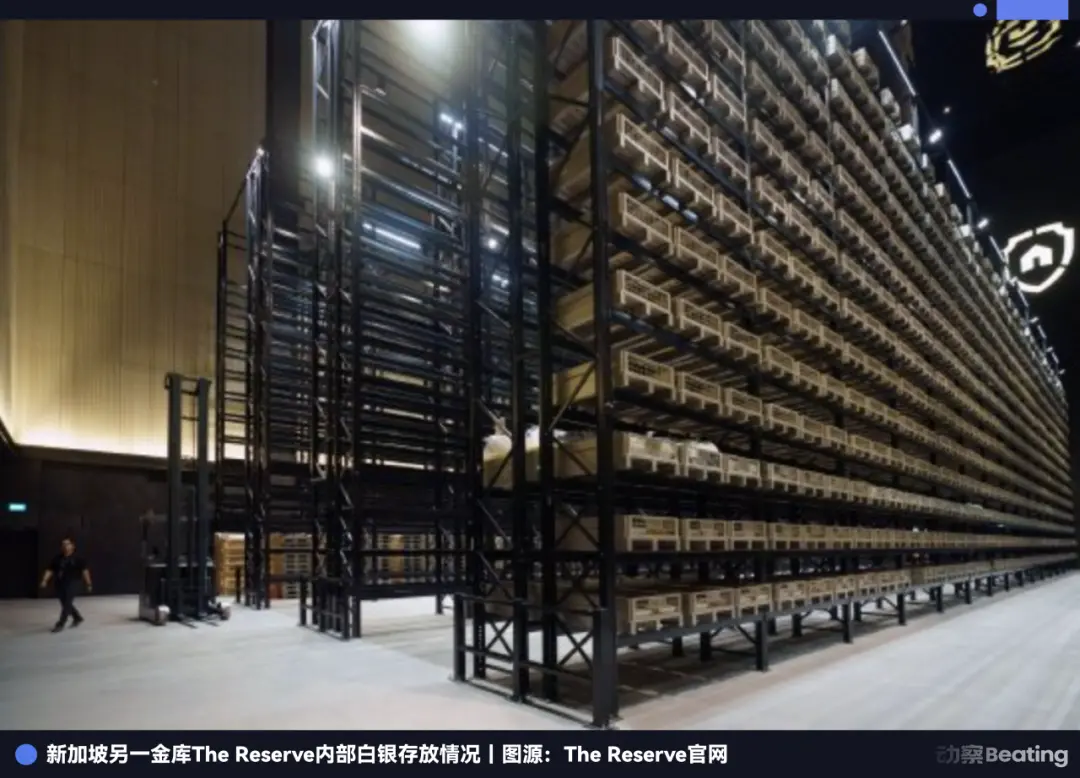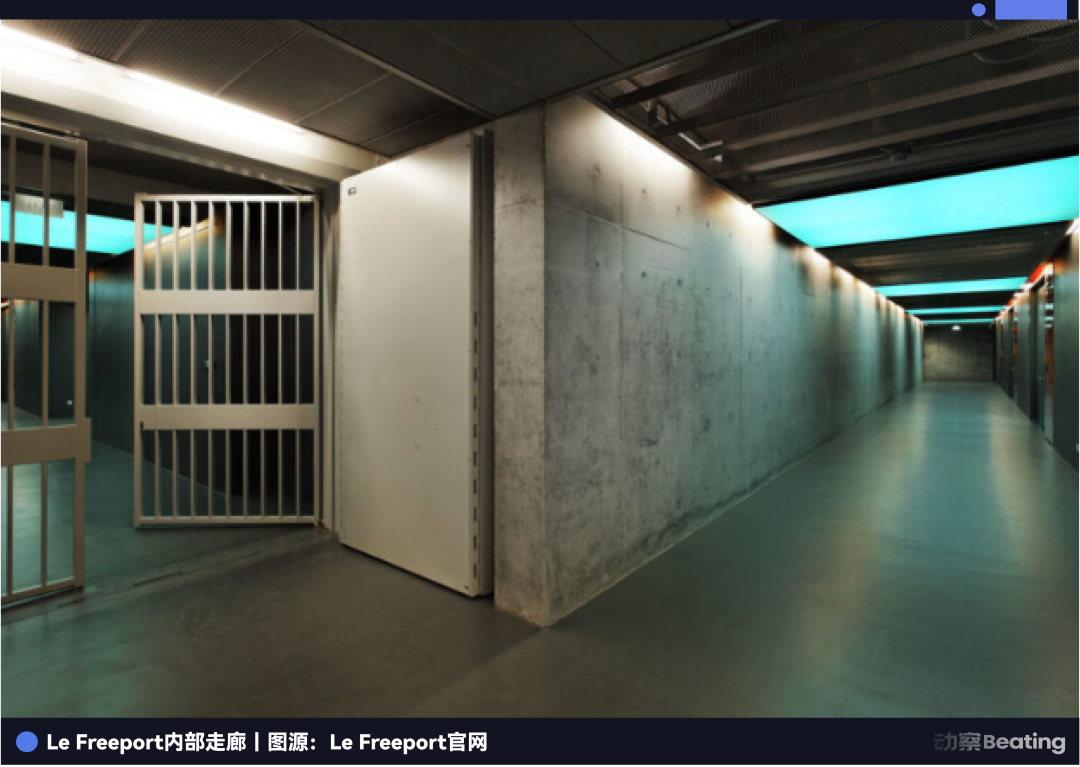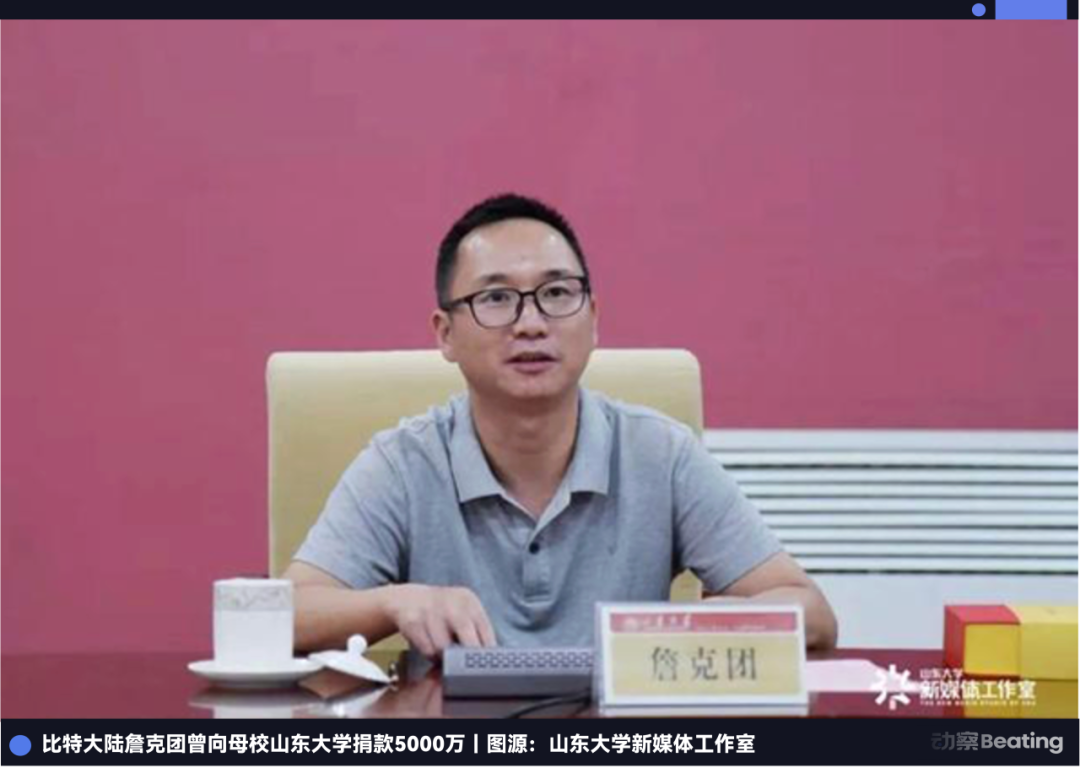Author: Lin Wanwan, BlockBeats
Twelve minutes north of Singapore's Changi Airport, a vault known as Le Freeport stands at the end of the runway, one of the highest security private vaults in the world.
This building, costing around 100 million Singapore dollars, is referred to as "Asia's Fort Knox." It has no windows, yet maintains a constant temperature of 21°C and a humidity level of 55%, perfectly suited for the optimal storage of artworks.
Behind its heavily fortified steel doors lie billions of dollars worth of gold, silver, and rare artworks: no customs declaration is required, and not a single tax is paid.
Three years ago, one of Asia's youngest billionaire crypto tycoons, Wu Jihan, founder of Bitdeer, seized the opportunity to acquire this vault, rumored to have cost as much as 100 million Singapore dollars, for 40 million Singapore dollars (approximately 210 million RMB).

This deal was confirmed by Bloomberg at the time, with Wu Jihan's Bitdeer behind the purchase. Few mocked it then, questioning why a giant in the crypto space would divert from mining Bitcoin to buy an off-chain vault.
However, when gold skyrockets past 4,000 USD/ounce in 2025, looking back at this acquisition, it seems less like a diversion and more like a brilliant early bet.
But Wu Jihan's acquisition of Le Freeport was not just about concrete and steel doors. This fortress was designed from the outset as a bonded enclave for super-rich individuals and institutions: high-level security, discreet exhibition spaces, and the ability to elegantly bypass numerous tariff barriers.
It reveals a fact: those Chinese billionaires who became wealthy overnight through Bitcoin have long set their sights on the oldest safe-haven asset in human history: gold.
Gold's Retirement Home
Le Freeport officially opened in Singapore in May 2010. This building was designed as infrastructure from the start, located right next to the airport, with internal passages that can almost directly reach the runway, allowing valuable items to be transported from the aircraft to the vault in just a few minutes.
The supportive stance of the Singapore government is reflected in its ownership structure. The National Heritage Board and the National Arts Council of Singapore were among the initial shareholders of Le Freeport.
At that time, Singapore was upgrading from a "trading port" to an "asset port," and Le Freeport was included in the global art and wealth management center plan, benefiting from the Zero GST Warehouse Scheme, becoming one of the few vaults in the world with tax exemption, bonded, and cross-border settlement functions.
Under such institutional arrangements, Le Freeport quickly entered the sights of global billionaires and institutions. It not only allows for large physical assets; it is also open to non-Singaporean holders without the need for immigration procedures or customs duties.
For a Picasso masterpiece valued at 50 million, calculating a tax rate of 10%–30%, placing it in Le Freeport means saving tens of millions in tax burdens.
Since Le Freeport does not publicly share photos of its internal storage, we can only catch a glimpse of the interior from images released by another newly established vault, The Reserve.

At one point, it gathered a top-tier group of institutional tenants, including one of the world's major gold traders, JPMorgan, a subsidiary of Christie's, CFASS, as well as international financial institutions like UBS and Deutsche Bank, with large amounts of gold bars being transited and custodied through it.
However, as some countries tightened regulations on luxury goods and offshore assets, these institutions began to vacate, and Le Freeport fell into long-term losses.
Since 2017, Le Freeport has been classified as a "problem asset" in the market, and the owners began to attempt to sell it, until five years later, a buyer finally emerged—Wu Jihan.
At that time, the crypto market was experiencing a true winter. The collapse of the LUNA algorithmic stablecoin raised doubts about the entire on-chain credit system; Three Arrows Capital went bankrupt, Celsius and BlockFi followed suit, and the deleveraging chain transmitted layer by layer, ultimately culminating in the collapse of the FTX empire, exposing counterparty risks across the board.
During this period, Chinese crypto entrepreneur Wu Jihan, through Bitdeer, purchased this vault, previously seen as a "hot potato," for about 40 million Singapore dollars (approximately 210 million RMB).
Wu Jihan co-founded Bitmain, the world's largest mining machine manufacturer, at one point controlling about 75% of the global Bitcoin hash rate, making him one of the key figures in the last mining cycle. After spinning off Bitdeer, he exited Bitmain's control as a permanent resident of Singapore, focusing on Bitdeer's hash power and infrastructure business.
He has not publicly elaborated much on this acquisition, only confirming it when asked by Bloomberg.
Now, the official website of Le Freeport clearly states that it is not just a vault, but a private experience for a select few.
Consider that people in the crypto space spend their entire lives figuring out how to secure their private keys; the real big money has long been resting in Singapore's vaults, some represented by family trust documents, others etched on steel plates as mnemonic phrases.
Not only Chinese billionaires, but also emerging wealthy individuals from India and Southeast Asia are quietly becoming regulars at Wu Jihan's Le Freeport.
Le Freeport has never publicly disclosed its client list, but clues can be gleaned from information from international auction houses: many artworks are "directly stored" after transactions, no longer circulating back into the market.
A similar trend is occurring in Southeast Asia, where listed billionaires transfer part of their cash directly into Le Freeport: gold bars, silver, high-end jewelry, limited edition Patek Philippe watches, vintage cars, and rare artworks are sent straight from the trading floor into this secretive warehouse.
Considering that there may be potential "vault members" among the readers, I will clarify the gold storage process here.
There are armed security guards at the entrance, and visitors must first use their passports to check their backgrounds online to confirm they are not wanted high-risk individuals; to enter the core storage area, one must pass at least five checkpoints, including identity verification, biometric checks, bulletproof doors, and personal item security checks. The interior and exterior are equipped with hundreds of high-definition cameras, monitored 24/7 without blind spots. Adding the physical difficulty of "30 kg silver bars and 12.5 kg gold bricks," even if someone breaks in, they can hardly carry anything away.

So while outsiders are still debating whether "gold can still rise," those inside are already discussing how many bottles of Romanee-Conti at 150,000 a bottle to store first, and which layer and row of shelves to hang the Picassos and Rembrandts for better photo numbering for their wives.
The endpoint for workers is their provident fund accounts, while the endpoint for Asian billionaires is these windowless walls in Singapore.
Of course, the vault only occupies a physical space advantage; to gain greater influence over the gold industry chain, one needs to penetrate further upstream.
Fujian People Move the Bloodline of Gold
While Chinese aunties are still queuing at gold shops to snag discounts of 5 yuan per gram, old money families and new blockchain elites are already arm-wrestling over tons: who calls the shots.
In May of this year, a fintech company named Antalpha submitted a prospectus to Nasdaq. In the prospectus, it mentioned "Wu Jihan," who co-founded the mining company Bitmain.
The document clearly states: "We are the main financing partner of Bitmain." Both parties signed a memorandum of understanding, agreeing that Bitmain would continue to use Antalpha as its financing partner, with mutual client referrals.

This company previously provided supply chain loans and client financing for Bitmain, the world's largest mining machine manufacturer. That was the business legacy left by Wu Jihan.
Now, as Wu Jihan has long left Bitmain, the power has shifted to another founder, a crypto tycoon from Fujian, Zhan Ketuan.
There are many places in China where gold is revered, but those who truly tie their personal fortunes to gold are undoubtedly at the forefront, especially the people of Fujian: Chen Jinghe from Longyan turned Fujian's "chicken rib mine" into a world-class mining giant, Zijin Mining, a tenfold stock; Zhou Zongwen from Fuzhou founded Zhou Dasheng in Shuibei, making it one of the top three nationwide through franchising; and people from Putian, once street-side goldsmiths, now account for nearly half of China's gold wholesale and retail.
Gold mines are in Fujian, gold shops are in Fujian, and gold bosses come one after another, leading one to suspect that what flows in the veins of Fujian people is indeed golden blood.
Clearly, Zhan Ketuan's bloodline has been ignited, and how could the Fujian people miss out on the on-chain gold business?

He has set his sights directly on Tether, the world's largest stablecoin issuer, which is also among the top 30 gold buyers globally, a new "on-chain gold master."
In October of this year, Tether announced a partnership with Antalpha to build a "Tokenized Gold Treasury," planning to raise 200 million dollars, using the gold token XAU₮ as a base to create a "gold-backed digital credit system."
The division of labor is very Fujian-like: Tether is responsible for turning real gold into tokens and storing reserves in Swiss private vaults; Antalpha is responsible for turning this token into a financial instrument, designing collateral structures, creating loan products, and establishing a network of gold vaults in Singapore, Dubai, and London, making "on-chain gold" a pledge certificate that can be exchanged for physical gold bars at any time.
In simple terms, it is a living "modern gold standard": Tether acts as the mint, Antalpha as the banknote issuer, with the story's backdrop shifting from Bretton Woods to Swiss vaults.
According to public reports, Tether has stockpiled about 80 tons of gold in Swiss vaults, equivalent to the official reserves of some small and medium-sized countries. However, Tether claims that for "security reasons," the vault refuses to disclose its specific address.

Unlike central banks that "lock gold bars in a cellar, unseen for decades," XAU₮ is fragmented and placed on-chain, making it traceable, divisible, tradable, and collateralizable. Gold, which could only lie in a cellar, has been transformed into a complete system that can circulate, be pledged, and be wholesaled to institutions, creating "dynamic liquidity."
Antalpha simply had its own company Aurelion put up 134 million dollars to directly purchase XAU₮, preparing to position itself as "the first publicly listed treasury company with on-chain gold as reserve assets." This is akin to rewriting the old money tradition of "stuffing gold bars into Swiss vaults" into "stuffing a line of XAU₮ into the balance sheet of a public company."
A statement from Tether CEO Paolo Ardoino highlights the underlying logic: "Gold and Bitcoin are two poles of the same logic; one is the oldest store of value, and the other is the most modern."
Gold prices are also enhancing the presence of this new highway: global gold investment has surged by over 50% this year, and the market capitalization of XAU₮ has doubled in the same period. Those who fear risk and those who love to gamble are now surprisingly on the same path.
They are attempting to answer a larger question: can humanity's oldest method of wealth storage live again on the blockchain?
Not Following the Old Rules
In October 2025, gold prices surged past 4,000 dollars per ounce, breaking historical records with an annual increase of over 50%, making it one of the best-performing asset classes globally.
On the surface, this is another round of a "gold bull market"; looking deeper, three forces are rearranging the power dynamics in gold.
In the front row are central banks. Over the past few years, global central banks have almost "bought the dips," treating gold as a foundational asset for de-dollarization and hedging against sanctions. They are not concerned with short-term fluctuations but focus on one question: in the worst-case scenario, can this still be exchanged for food, weapons, or allies?
In the second row are Asia's ultra-wealthy. Money from China, Hong Kong, the Middle East, and Southeast Asia is quietly piling up into a new wall of gold bricks through Singapore's vaults, Swiss cellars, and family office trusts.
They are no longer satisfied with buying a few kilograms of "paper gold" from banks; instead, they are directly purchasing a wall: some deposit money in Singapore banks, while others store gold bars directly in vaults, with the sense of security being entirely different between the two types of deposits.
Wu Jihan's acquisition of Le Freeport is a node in this chain: shifting from mining Bitcoin to managing gold bars and famous paintings for others, transitioning from "on-chain returns" to "off-chain security."
In the third row are the new crypto elites. Zhan Ketuan, Antalpha, and Tether are playing a different game: while Wu Jihan bought the wall of the vault, they are buying the variable line within the vault—XAU₮.
In this structure, Tether mints real gold into tokens and locks them in Swiss vaults; Antalpha turns these tokens into assets, placing them into the balance sheets of public companies and the collateral baskets of institutional clients.
Thus, the role of gold has been quietly rewritten: for central banks, it remains the "ultimate collateral"; for Asia's wealthy, it has become a "family cold wallet" that can be passed down through generations; for the new crypto elites, it represents a financial system that can continuously layer structures, earning interest rate spreads and liquidity premiums.
For most people, gold is merely a candlestick chart and weight in grams; for these three groups, gold is a comprehensive ledger involving family, sovereignty, and national security.
The narrative shifts from one to another, but what lies beneath is actually very old. After all, the path can twist and turn, stories can be fabricated, but capital is the most honest; when the show ends and the lights come on, what they truly seek is the sense of security that allows them to sleep soundly at night.
免责声明:本文章仅代表作者个人观点,不代表本平台的立场和观点。本文章仅供信息分享,不构成对任何人的任何投资建议。用户与作者之间的任何争议,与本平台无关。如网页中刊载的文章或图片涉及侵权,请提供相关的权利证明和身份证明发送邮件到support@aicoin.com,本平台相关工作人员将会进行核查。




